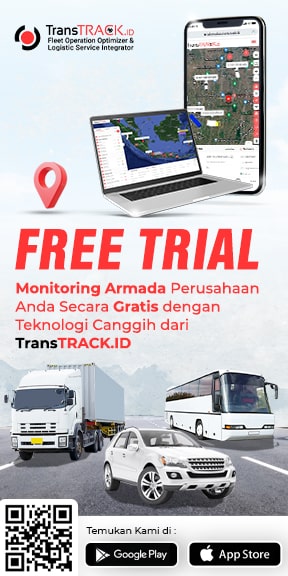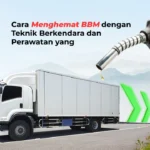Kenali Seat Belt, Fungsi, Cara Kerja, dan Komponennya!
Diposting pada Maret 8, 2024 oleh Nur Wachda Mihmidati

Seat belt adalah sabuk pengaman yang dipasang di kursi mobil atau kendaraan lainnya yang bertujuan untuk melindungi penumpang dari cedera serius saat terjadi kecelakaan atau tabrakan. Fungsinya adalah untuk mengikatkan penumpang ke kursi agar tidak terlempar keluar dari kendaraan saat terjadi tabrakan atau terjangan yang kuat. Seatbelt juga membantu dalam menyerap energi yang dihasilkan oleh tubuh penumpang saat terjadi benturan, sehingga dapat mengurangi risiko cedera pada bagian tubuh yang rentan seperti dada, kepala, dan leher. Dengan menggunakan seatbelt, peluang selamat dari kecelakaan lalu lintas dapat meningkat secara signifikan. Simak artikel TransTRACK berikut untuk penjelasannya!
Komponen pada seat belt
Seat belt terdiri dari beberapa komponen yang penting untuk menjaga keamanan penggunanya. Berikut adalah beberapa komponen utama dari seatbelt:
Sabuk
Sabuk pada seatbelt terbuat dari bahan yang kuat dan tahan lama, seperti nilon atau serat poliester. Sabuk ini adalah bagian yang melingkari tubuh penumpang untuk menjaga mereka tetap terikat pada kursi.
Buckle (pengait)
Buckle adalah komponen yang digunakan untuk mengunci sabuk pengaman. Biasanya, buckle ini memiliki mekanisme penguncian yang cepat dan mudah digunakan.
Retractor (Pengunci)
Pengunci atau retractor adalah mekanisme yang memungkinkan sabuk pengaman untuk ditarik keluar ketika diperlukan, tetapi juga memblokir sabuk saat terjadi kecelakaan atau pengereman tiba-tiba.
Penguat (webbing)
Penguat merupakan bagian dari sabuk pengaman yang diperkuat dengan serat-serat kekuatan tinggi, seperti serat serat kevlar, untuk memberikan kekuatan ekstra saat terjadi kecelakaan.
Pengatur Panjang
Beberapa seatbelt dilengkapi dengan pengatur panjang yang memungkinkan pengguna untuk menyesuaikan panjang sabuk sesuai dengan kebutuhan tubuh masing-masing.
Pengait atau Retraktor
Pengait atau retractor adalah mekanisme yang memungkinkan sabuk pengaman untuk ditarik keluar ketika diperlukan dan otomatis kembali ke posisi semula ketika tidak digunakan.
Komponen-komponen ini bekerja sama untuk memberikan perlindungan maksimal kepada pengguna seat belt saat terjadi kecelakaan atau tabrakan.
Cara kerja seat belt
Cara kerja seat belt didasarkan pada prinsip perlindungan terhadap kecelakaan atau tabrakan. Berikut adalah langkah-langkah umum tentang bagaimana seatbelt bekerja:
Penempatan Sabuk
Saat pengemudi atau penumpang memasuki kendaraan, mereka menarik sabuk pengaman dari retractor dan mengaitkannya ke buckle di sekitar pinggang dan bahu mereka.
Penarikan Sabuk
Saat kendaraan bergerak, seatbelt dapat sedikit longgar agar nyaman bagi pengguna. Namun, jika terjadi pengereman mendadak atau tabrakan, mekanisme penguat sabuk dan penguncian sabuk (retractor dan buckle) akan aktif.
Mekanisme Retraktor
Ketika terjadi kejadian mendadak seperti pengereman kuat atau tabrakan, mekanisme retractor pada seat belt akan mengunci sabuk dengan cepat, mencegah penumpang terlempar ke depan.
Pembatas Beban
Beberapa seatbelt dilengkapi dengan pembatas beban, yang mengurangi tekanan pada tubuh penumpang dengan melepaskan sebagian dari sabuk jika tekanan yang terlalu besar terjadi pada sabuk pengaman.
Distribusi Gaya
Sabuk pengaman bertujuan untuk mendistribusikan gaya yang dihasilkan oleh tabrakan atau pengereman mendadak ke area tubuh yang lebih kuat, seperti bahu, dada, dan panggul, untuk mengurangi risiko cedera serius.
Perlindungan Keselamatan
Dengan sabuk pengaman yang terpasang dengan benar dan mekanisme penguncian yang aktif, seatbelt membantu melindungi pengguna dari cedera serius, seperti patah tulang, cedera kepala, dan cedera internal, dengan menjaga mereka tetap terikat pada tempat duduk selama terjadi kecelakaan.
Penting untuk selalu menggunakan seatbelt dengan benar setiap kali berkendara atau menjadi penumpang, karena ini merupakan salah satu cara paling efektif untuk meningkatkan keselamatan di jalan raya.
Cara memakai seat belt dengan aman
Memakai seat belt dengan aman adalah kunci untuk mendapatkan perlindungan maksimal saat berkendara. Berikut adalah cara memakai seat belt dengan aman:
Pasanglah seat belt dengan benar
Tempatkan sabuk pengaman melintang di atas bahu dan dada, serta sejajar dengan panggul atau pinggul. Pastikan sabuk tidak terlalu longgar atau terlalu ketat. Sabuk yang terlalu longgar dapat mengurangi efektivitasnya dalam melindungi saat terjadi kecelakaan, sedangkan sabuk yang terlalu ketat bisa tidak nyaman atau bahkan menyebabkan cedera.
Gunakanlah semua komponen seat belt
Pastikan untuk mengaitkan buckle dengan benar, sehingga sabuk pengaman terkunci dengan aman. Jangan biarkan sabuk pengaman melintang di atas lengan atau di bawah lengan, karena ini dapat mengurangi efektivitasnya.
Posisikan kursi dengan benar
Duduklah tegak di kursi dengan punggung ditekuk dan kepala sejajar dengan bahu. Pastikan kursi tidak terlalu miring ke belakang atau terlalu maju ke depan.
Pastikan tidak ada lipatan pada sabuk
Sebelum memulai perjalanan, pastikan tidak ada lipatan atau putaran pada sabuk pengaman. Lipatan atau putaran dapat mengurangi kemampuan sabuk untuk menahan penumpang dengan aman saat terjadi kecelakaan.
Periksa anak-anak
Jika membawa anak-anak sebagai penumpang, pastikan mereka menggunakan kursi pengaman yang sesuai dengan berat dan tinggi mereka, serta selalu diikat dengan sabuk pengaman yang sesuai untuk anak-anak.
Gunakanlah seat belt setiap waktu
Selalu memakai seatbelt, baik sebagai pengemudi maupun penumpang, setiap kali masuk ke dalam kendaraan. Ini adalah langkah yang paling penting dalam meningkatkan keselamatan di jalan raya.
Dengan mengikuti langkah-langkah di atas, Anda akan memastikan bahwa Anda memakai seat belt dengan benar dan aman setiap kali berkendara, yang akan membantu melindungi Anda dan penumpang lainnya dari cedera serius saat terjadi kecelakaan.
Keselamatan di jalan raya adalah hal yang tak bisa ditawar. Dengan Seat Belt Sensor kami, TransTRACK memberikan solusi yang efektif dan otomatis untuk memastikan pengguna kendaraan selalu menggunakan seat belt dengan benar.
Dengan deteksi yang canggih, sensor ini memberikan peringatan kepada pengemudi jika seat belt tidak terpasang atau terpasang dengan tidak benar. Dengan begitu, pengemudi dapat memastikan keselamatan diri sendiri dan penumpang dengan lebih baik.
Dapatkan Seat Belt Sensor dari TransTRACK sekarang dan tingkatkan keselamatan perjalanan Anda. Hubungi kami untuk informasi lebih lanjut dan jadikan langkah kecil ini sebagai investasi besar dalam keselamatan Anda di jalan raya.
Postingan Terbaru
Topik :
 English
English








